| Telefunken TLHB5400 Silicon Carbide LED | |
| Written by AnubisTTP on 2017-03-19 |
|
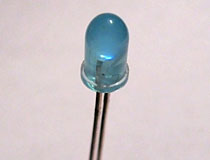 |
For 20 years, the color palette of the world's visible light LEDs was limited to a thin band of the spectrum that ranged from red to a sickly shade of yellow-green that not even a semiconductor engineer could love. This all changed in the early 1990's when the first blue LEDs, based on a new formulation of silicon carbide, arrived to form the thin end of a wedge that would ultimately saturate the world of consumer electronics. The TLHB5400, made by Telefunken, is an example of one such early SiC blue LED. Like all silicon carbide LEDs, this is a relatively dim device; with a light output of only 1.5mcd the TLHB5400 is suitable only for panel indicators and other similar applications. The LED is packaged in an mundane 5mm epoxy enclosure that would be unremarkable if not for it's distinctive sky blue coloration.
Interestingly, the TLHB5400 part number was used by Telefunken for two different LEDs; TLHB5400's made after 1997 use a gallium nitride die with a 428nm peak wavelength, whereas those made prior are equipped with a 470nm or 480nm silicon carbide die. In 1998 Vishay bought out Telefunken and continued production of gallium nitride TLHB5400 LEDs under the Vishay name.
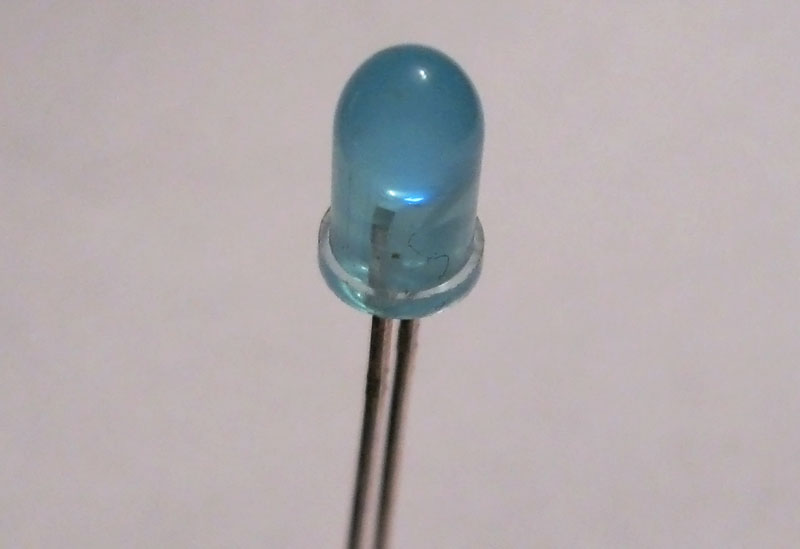
Telefunken TLHB5400 LED, powered to normal brightness.
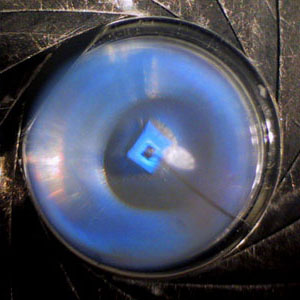
Silicon carbide LED die, viewed at 30x magnification.
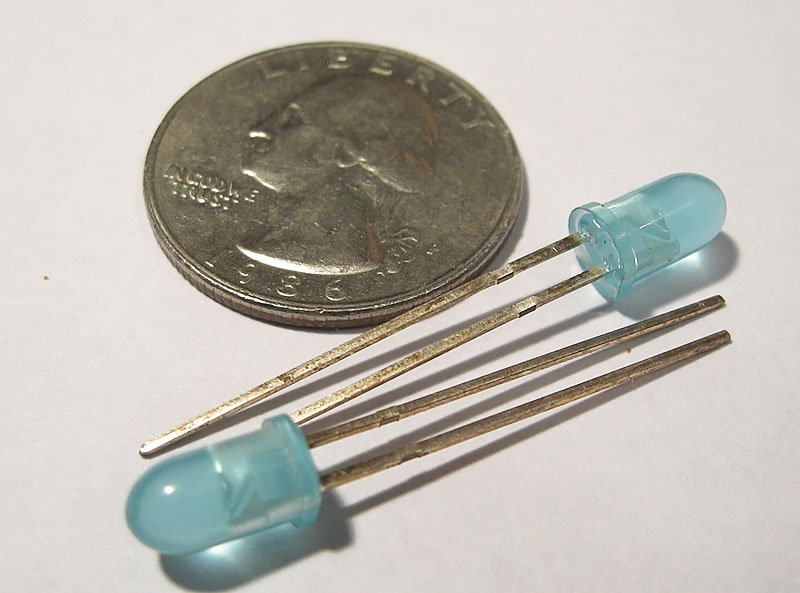
Though the TLHB5400 appears to be a mundane 5mm LED, it is actually based on early silicon carbide blue LED technology.
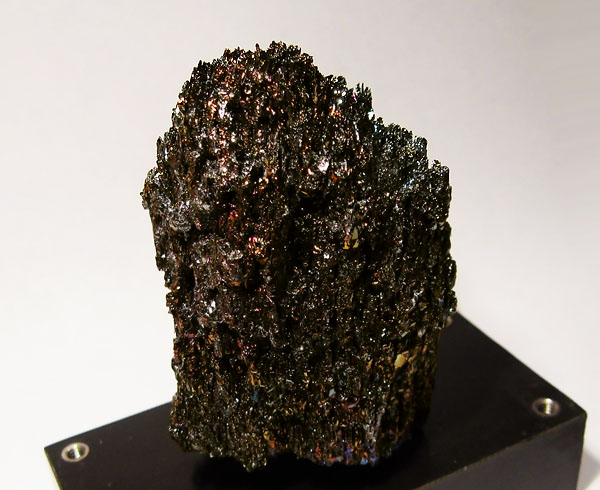
A chunk of industrial silicon carbide, similar to the type used in the the first point contact LED prototypes. Yellow light-emitting crystals can be found randomly mixed into the matrix.
 Return to LEDs & Solid State Indicators
Return to LEDs & Solid State Indicators







 Return to LEDs & Solid State Indicators
Return to LEDs & Solid State Indicators